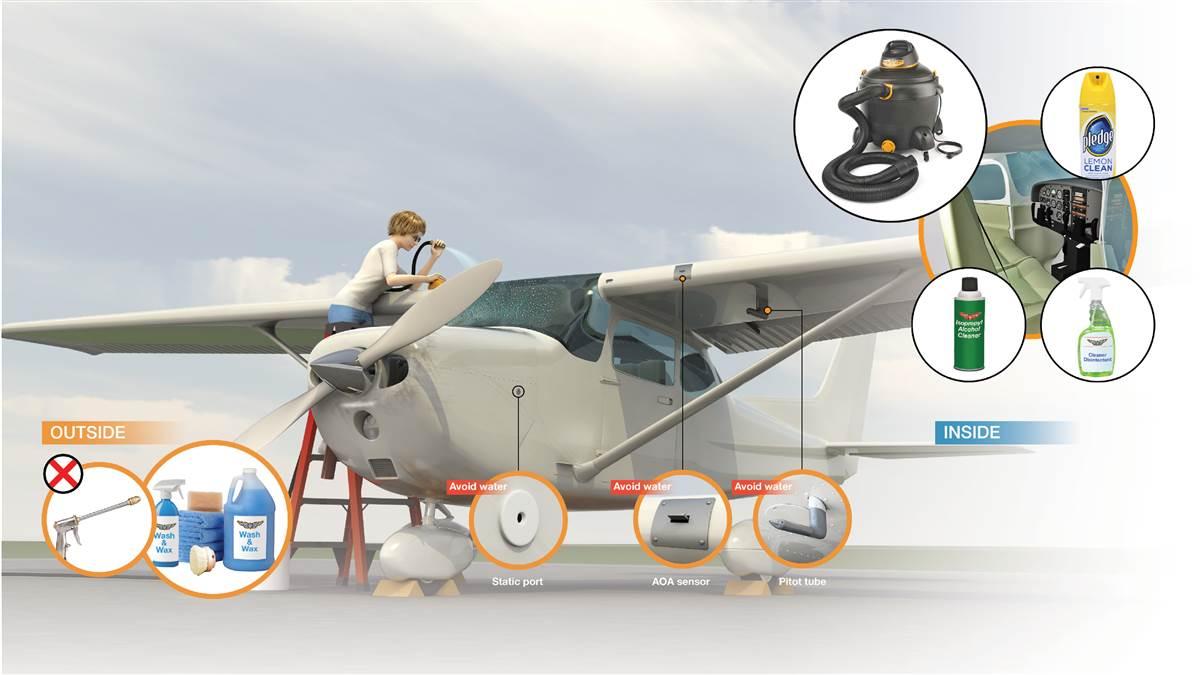So fresh and so clean
Basics of paint and interior care

Outside
Let’s start with what not to do. Do not, ever, under any circumstances, use a pressure washer. Cleaning the outside of your airplane with a pressure washer is a terrible idea. It will strip the paint, force grime in between the skins, and put water in places you don’t want it. Instead, grab these essential tools:
- Aviation-specific cleaner
- Clean rags or a soft-bristled brush
- Water
- Aiation degreaser
There’s no special technique to washing. Some suggest going over the entire airplane with soap and water, and then hitting the tricky spots with a degreaser. Others recommend spray-on, wipe-off cleaners to avoid getting water where you don’t want it. Whichever you prefer, keep in mind that you don’t want water on angle of attack sensors, in static ports, or in the pitot tube. And be conservative with rags. If you go over a particularly dirty section, change the rag or clean the brush. Otherwise, you could be using the airplane’s own dirt to scratch the paint elsewhere. Similarly, don’t wipe a dry cloth across the paint. Use a spray-on cleaner, a dilution of denatured alcohol, or other aircraft-specific product.
Inside
A simple vacuum will take care of most interior cleaning needs. Be cautious about spraying cleaners on headliners, sidewalls, or leather seats. Test small areas to ensure you’re not bleaching the material.
The instrument panel is the trickiest part of interior cleaning. Largely ignored when cleaning in the past, touchscreens and buttons got a lot of attention during the pandemic. Thankfully, manufacturers put out some useful guidance. Garmin recommends a solution of 70 percent isopropyl alcohol without ammonia, although up to 91 percent can be used. Spray it on the cloth first and then wipe down, and never spray directly onto the panel. A soapy cloth can be used for buttons and other areas, but do so judiciously.
Windows
Most light aircraft windows are plastic, and not terribly durable. Never use a dry cloth. Spray the cleaner first, and then wipe in straight lines—vertically for the windscreen, horizontally on the side windows. Many experienced pilots swear by Pledge, preferably lemon, and it does foam nicely. But aviation-specific cleaners are available as well.



